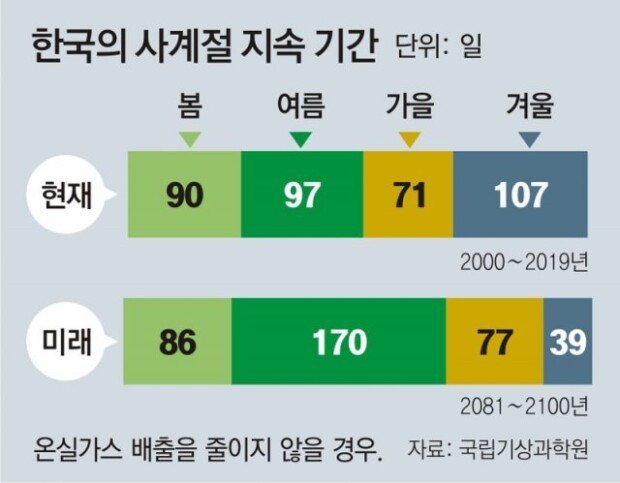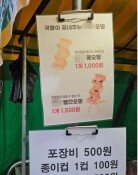Summers could last for 170 days by the end of 21st century, say scientists
Summers could last for 170 days by the end of 21st century, say scientists
Posted December. 24, 2021 07:44,
Updated December. 24, 2021 07:44

Scientists forecasted that summers could last half the year 60 years from now if greenhouse gas emissions do not decline significantly. In particular, Jungbu region is expected to experience an incessant heat wave for almost 90 days.
The National Institute of Meteorological Sciences under the umbrella of the Korea Meteorological Administration released a forecast report on climate change in South Korea on Thursday, an analysis specifically focused on the South Korean context of global climate change scenarios, which was announced by the UN Intergovernmental Panel on Climate Change (IPCC) in its sixth special report on emissions scenarios last August.
According to the NIMS’s analysis, the average annual temperature of South Korea would increase as high as 18.2 degrees Celsius by the end of this century (2081~2011), which is 60 to 80 years from now, provided that greenhouse gas emissions continue as is, 6.3 degrees Celsius higher than the current average annual temperature of South Korea measured from 2000 to 2019 (11.9 degrees Celsius). During the same period, the average annual precipitation is projected to increase by 18%, from 1328mm to 1571mm.
The number of heat wave days when the highest daily temperature goes above 33 degrees Celsius is also expected to increase nationwide, especially in the Seoul metropolitan area and Chungcheong provincial areas. The number of heat wave days in the above two areas is currently stays at 7.8 and 8.7 days, respectively, but it would increase up to 86.4 and 89.1 days, respectively, by the end of the 21st century. “The more climate change exacerbates, patterns of continental high atmospheric pressure also transform, and the temperature increase tends to become greater in middle latitude regions than in low latitude regions,” said Byun Young-hwa, head of Climate Change Projections Research Team of the NIMS .
The Korea Meteorological Administration predicted that summer would become longer by the end of this century if the trend continues, but it is unlikely that the climate in South Korea transforms into a subtropical climate. “Average temperature and the number of heat wave days will go up, but cold snap and winter cold will still exist at the end of 21st century,” said Byun. “A more meticulous study needs to be conducted in relation to climate transition.”
If greenhouse gas emissions are reduced to achieve “net-zero” emissions by 2050, the temperature increase could be significantly contained. Under this scenario, South Korea’s average annual temperature would increase by 2.3 degrees Celsius by the end of this century, and average annual precipitation is projected to increase by 3% to 1,374mm.
kej09@donga.com
Headline News
- Joint investigation headquarters asks Yoon to appear at the investigation office
- KDIC colonel: Cable ties and hoods to control NEC staff were prepared
- Results of real estate development diverged by accessibility to Gangnam
- New budget proposal reflecting Trump’s demand rejected
- Son Heung-min scores winning corner kick







